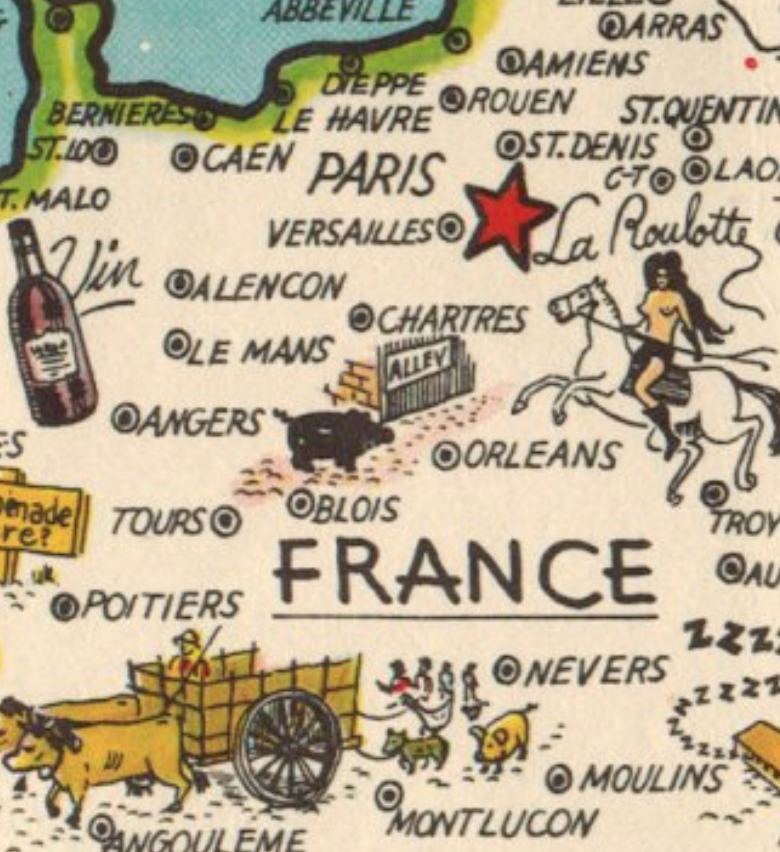The majority of people speak three languages in the Philippines: their native tongue, Tagalog, and English. Given the 180 languages spoken by Filipinos in diverse locations, it’s not unusual for a Filipino to be multilingual.
However, as modernity and technology improve, some individuals use slang for Filipino terminology, causing various Filipino languages and dialects to become extinct. As a result, everyone should study and keep up with the many Filipino languages that act as identifiers for various ethnic groups.
Let’s take a closer look at the different languages in the Philippines and learn more about their origins and social significance. Surprisingly, the Philippines boasts the world’s third-largest number of English speakers! The official languages of the nation are English and Tagalog/Filipino.
All government transactions are conducted in these two languages. That hardly scratches the surface of the massive language riches available in this country. Depending on how you identify them, the Philippines contains anywhere from 70 to 170 distinct languages.
Important Languages in the Philippines

Pampango
The province of Pampanga, as well as southern Tarlac, northern Bataan, Bulacan, Nueva Ecija, and Zambales, speak Pampango or Kapampangan as their major and prominent. Some Filipinos in Mindanao, particularly in South Cotabato, speak Kapampangan.
Pangasinan
The Pangasinan ethnic group in Pangasinan, northern Tarlac, and the north half of Luzon’s central plains geographic region speaks Pangasinan as their primary language.
This Filipino language is also spoken in southern La Union and in the municipalities of Benguet, Nueva Vizcaya, Nueva Ecija, Zambales, and a few Aeta tribes in Central Luzon’s northern half, all of which border Pangasinan.
Malay in Malaysia (as Malaysian), Indonesia (as Indonesian), Brunei and Singapore, Hawaiian in Hawaii, and Malagasy in Madagascar are all closely related Filipino dialects and languages in the Philippines. It is also closely connected to the Ibaloi language, which is spoken north of Pangasinan in the adjacent province of Benguet.

Ilocano
Most Filipinos in Northern Luzon speak Ilocano, which has the Philippines‘ third-biggest linguistic population. Northern Luzon, comprising the Babuyan Islands, Cordillera Administrative Regionlanguages in the Philippines, Cagayan Valley, northern sections of Central Luzon, Mindoro, and scattered regions in Mindanao, speak this Philippine native language (the Soccsksargen region in particular).
The province of La Union approved an ordinance in September 2012 that recognized Ilocano (Iloko) as an official provincial language, alongside Filipino and English as national and Philippines official languages, respectively.
The province of La Union approved an ordinance in September 2012 that recognized Ilocano (Iloko) as an official provincial language, alongside Filipino and English as national and official languages in the Philippines, respectively.
Tagalog
Filipinos were forced to speak the colonists’ languages in the Philippineswhen they arrived in the Philippines. During the Spanish era, Spanish was extensively expressed in the Philippines for a while. Tagalog, on the other hand, became the official language of the Philippines through time.
Tagalog is a Philippine language spoken by the ethnic Tagalog people, who account for a quarter of the country’s population, and as a second language by the majority. You could be perplexed about whether the Filipino Tagalog is Filipino or Tagalog since there have been disagreements concerning the distinction. Both are valid. However, Filipino is the national or official languages in the Philippines.
Tagalog is the national language’s foundation. Tagalog was chosen as one of the official languages of the Philippines constitution three years after it was declared the basis of the national language (formally named “Pilipino” since 1959).
According to NCCA, the Philippines will be a Filipino lingua franca speaking nation by the year 2000, which is a significant accomplishment in a period of roughly 65 years (1935-2000).
more like this, just click on: https://24x7offshoring.com/blog/
Waray-Samarnon
The Waray people’s native language is Waray-Samarnon, and the Abaknon people of Capul, Northern Samar, and certain Cebuano-speaking peoples of eastern and southern Leyte speak it. Next to Cebuano and Hiligaynon, it is the third most widely spoken Visayan languages in the Philippines.
Hiligaynon
Hiligaynon (also known as Ilonggo) is a Filipino language spoken mostly in the Western Visayas (Iloilo, Capiz, Guimaras, and Occidental Negros) and Soccsksargen. It belongs to the Visayan languages and is more distantly linked to other languages in the Philippines. In the Visayas, it is the second most widely spoken language.
Cebuano
Cebuano is one of the most extensively spoken native languages in the Philippines. It may be heard in Cebu, Bohol, Siquijor, Negros Oriental, and northern Negros Occidental provinces. Southern Masbate, many parts of Leyte, Biliran, parts of Samar, and large parts of Mindanao (along with the municipality of Hinoba-an and the cities of Kabankalan and Sipalay to southern Masbate, various, portions of Leyte, Biliran, parts of Samar, and significant areas of Mindanao (together with Ilonggo).
In Zamboanga, Cagayan de Oro, Davao, Surigao, and Cotabato, Cebuano is spoken by a large portion of the metropolitan population. Cebuano is commonly referred to as Bisaya, but don’t confuse it with the other Visayan languages and dialects spoken languages in the Philippines.
Bicol
The Tagalog (who went to Camarines Norte and Camarines Sur) and Visayans were thought to be the first immigrants of Bicol (who moved to Masbate and Sorsogon). Different dialects arose in the languages in the Philippinesas a result of these migrations and the isolation of specific places.
The Bicol dialect is used interchangeably with Tagalog in Camarines Norte, whereas it is blended with northern Visayan in Masbate and Sorsogon. The Catanduanes dialect was also impacted by the Samar-Leyte dialect.
The Filipino dialects diverge from the Naga language in the so-called Rinconada towns (Buhi, Bula, Baao, Iriga, Bato, and Nabua). Even though the region’s dialects are diverse, Bicolanos in Naga City and the lower Bicol valley can converse using the “Bicol proper” languages in the Philippines.
Continue Reading, just click on: https://24x7offshoring.com/blog/


 Afrikaans
Afrikaans Albanian
Albanian Amharic
Amharic Arabic
Arabic Armenian
Armenian Azerbaijani
Azerbaijani Basque
Basque Belarusian
Belarusian Bengali
Bengali Bosnian
Bosnian Bulgarian
Bulgarian Catalan
Catalan Cebuano
Cebuano Chichewa
Chichewa Chinese (Simplified)
Chinese (Simplified) Chinese (Traditional)
Chinese (Traditional) Corsican
Corsican Croatian
Croatian Czech
Czech Danish
Danish Dutch
Dutch English
English Esperanto
Esperanto Estonian
Estonian Filipino
Filipino Finnish
Finnish French
French Frisian
Frisian Galician
Galician Georgian
Georgian German
German Greek
Greek Gujarati
Gujarati Haitian Creole
Haitian Creole Hausa
Hausa Hawaiian
Hawaiian Hebrew
Hebrew Hindi
Hindi Hmong
Hmong Hungarian
Hungarian Icelandic
Icelandic Igbo
Igbo Indonesian
Indonesian Irish
Irish Italian
Italian Japanese
Japanese Javanese
Javanese Kannada
Kannada Kazakh
Kazakh Khmer
Khmer Korean
Korean Kurdish (Kurmanji)
Kurdish (Kurmanji) Kyrgyz
Kyrgyz Lao
Lao Latin
Latin Latvian
Latvian Lithuanian
Lithuanian Luxembourgish
Luxembourgish Macedonian
Macedonian Malagasy
Malagasy Malay
Malay Malayalam
Malayalam Maltese
Maltese Maori
Maori Marathi
Marathi Mongolian
Mongolian Myanmar (Burmese)
Myanmar (Burmese) Nepali
Nepali Norwegian
Norwegian Pashto
Pashto Persian
Persian Portuguese
Portuguese Punjabi
Punjabi Romanian
Romanian Russian
Russian Polish
Polish Samoan
Samoan Scottish Gaelic
Scottish Gaelic Serbian
Serbian Sesotho
Sesotho Shona
Shona Sindhi
Sindhi Sinhala
Sinhala Slovak
Slovak Slovenian
Slovenian Somali
Somali Spanish
Spanish Sundanese
Sundanese Swahili
Swahili Swedish
Swedish Tamil
Tamil Tajik
Tajik Telugu
Telugu Turkish
Turkish Ukrainian
Ukrainian Urdu
Urdu Uzbek
Uzbek Thai
Thai Vietnamese
Vietnamese Welsh
Welsh Xhosa
Xhosa Yiddish
Yiddish Yoruba
Yoruba Zulu
Zulu